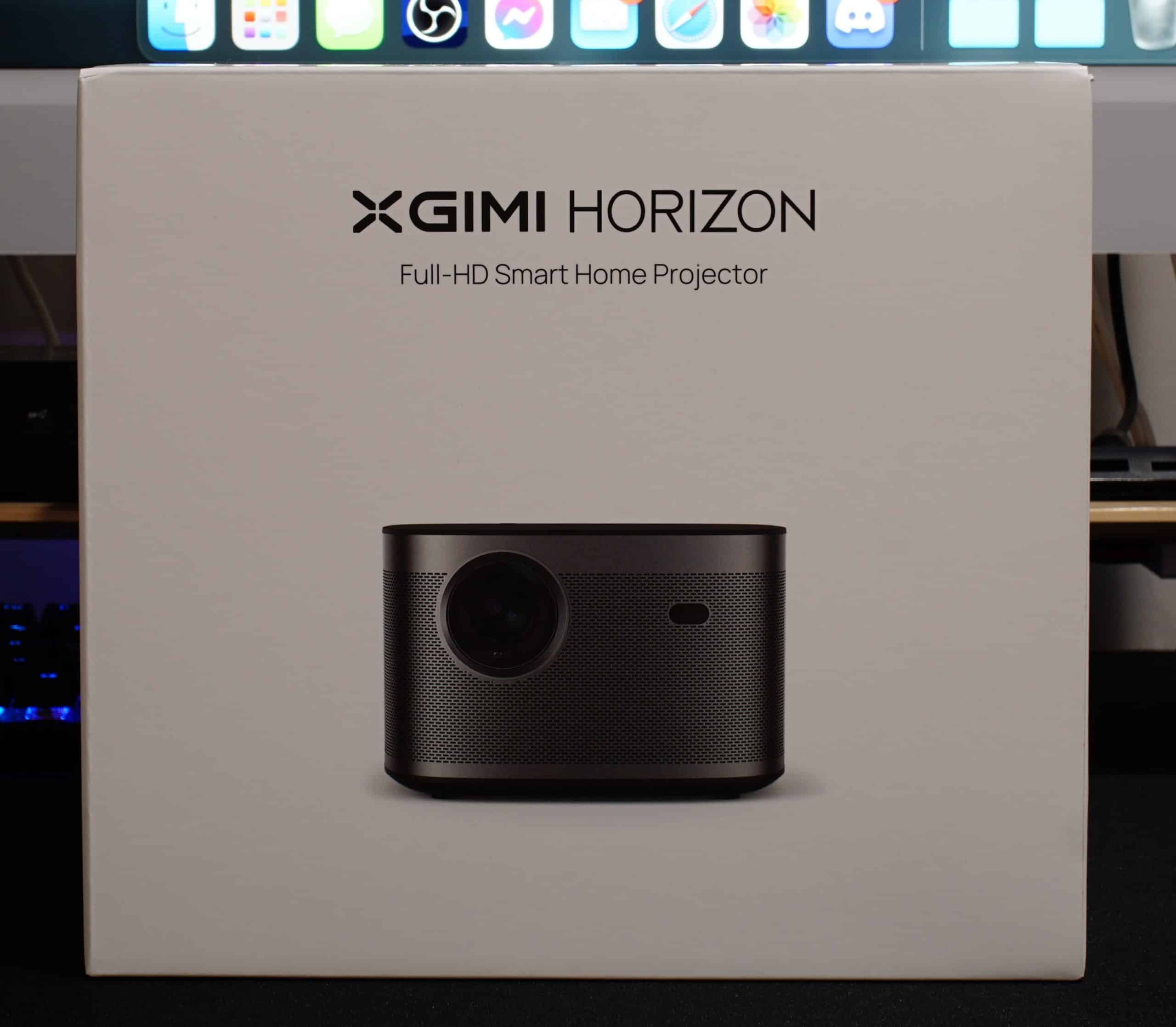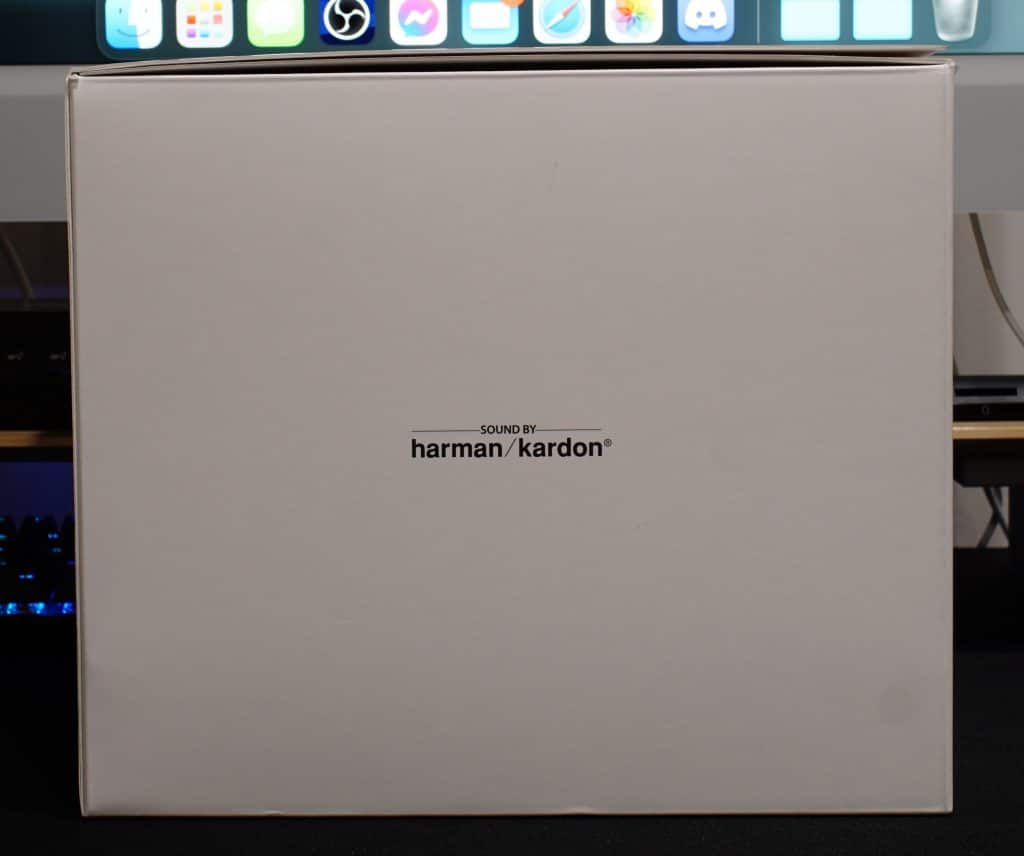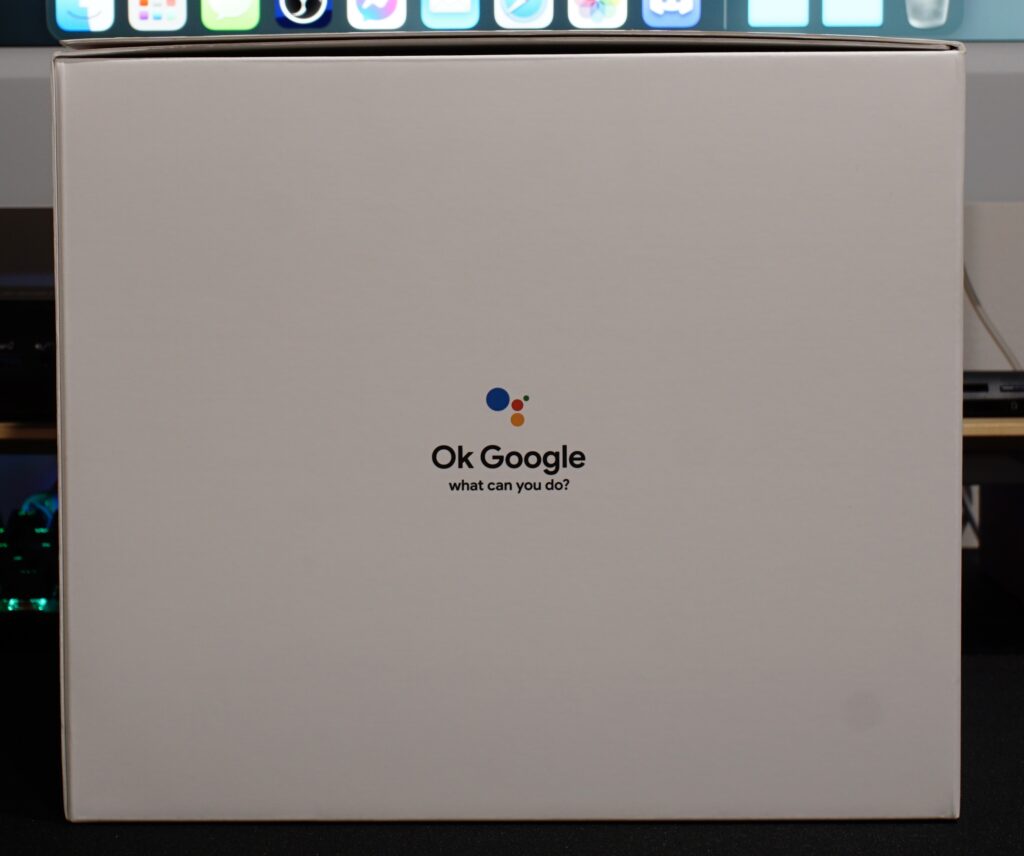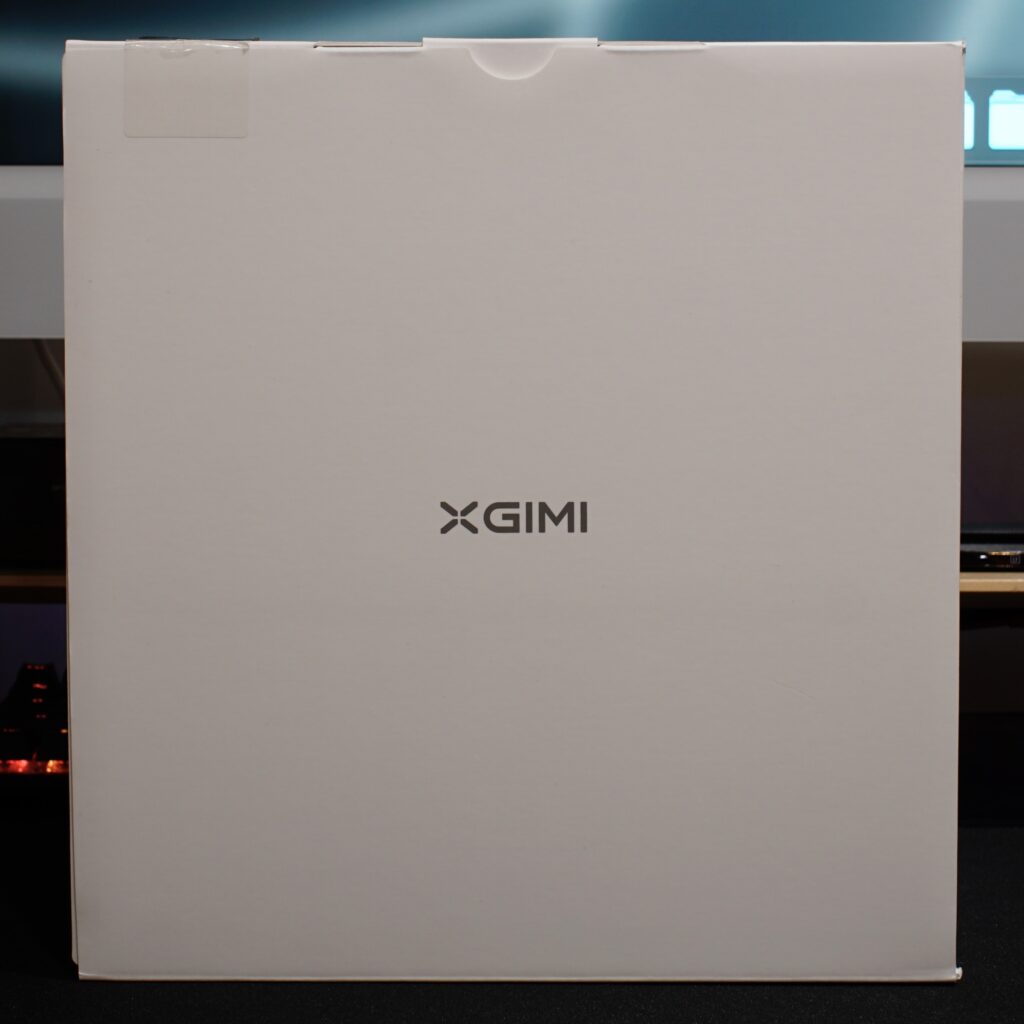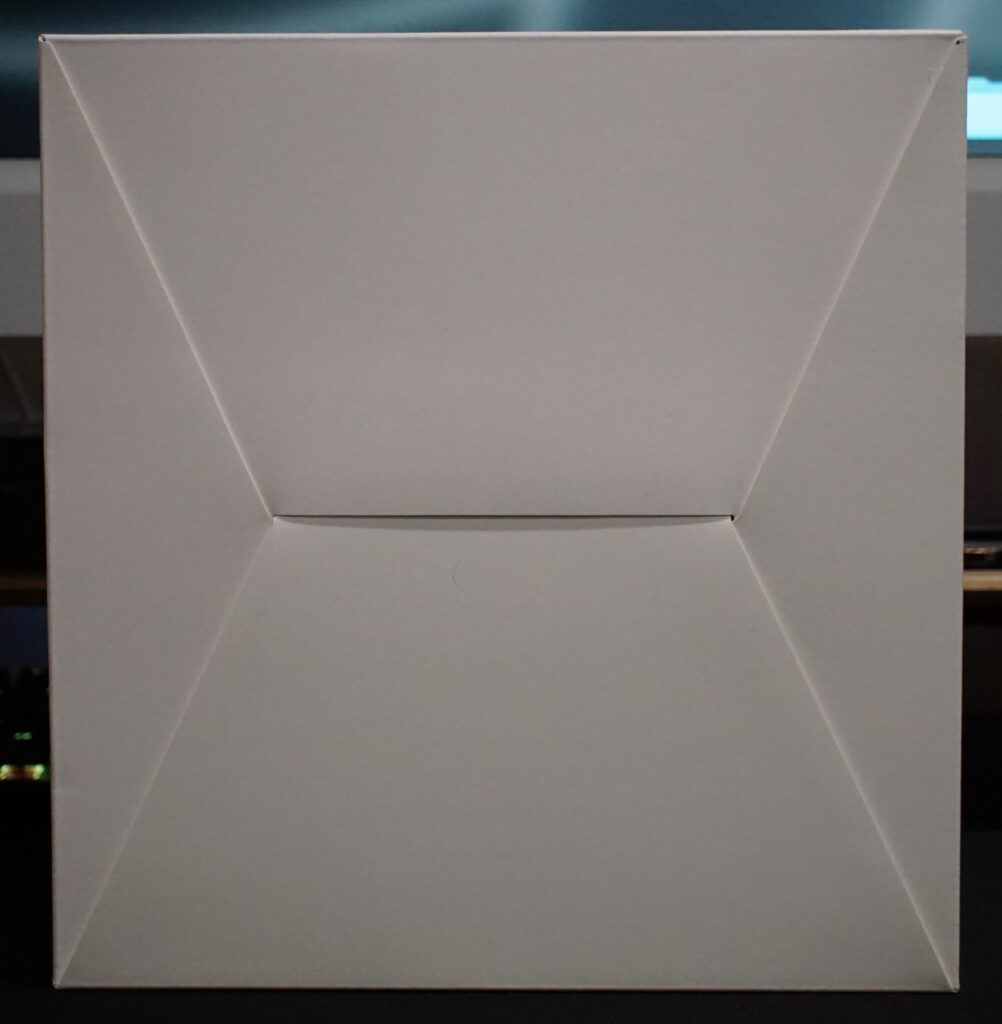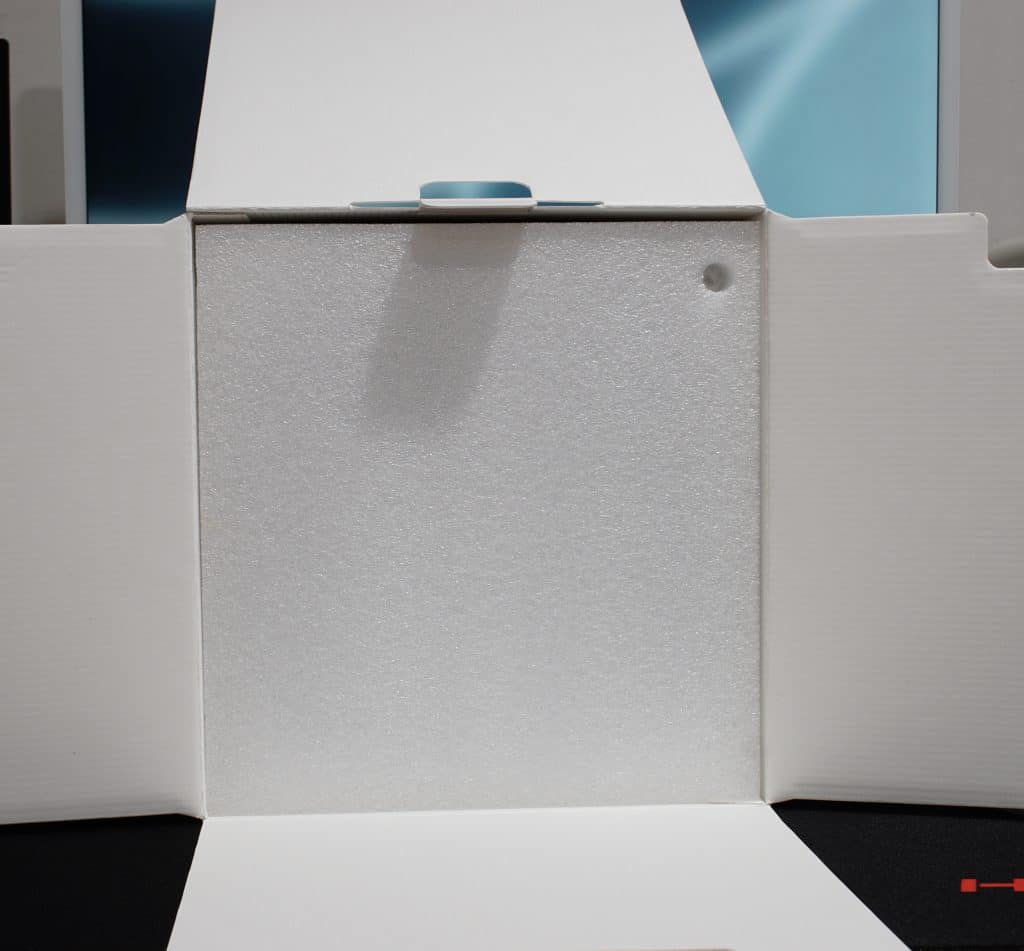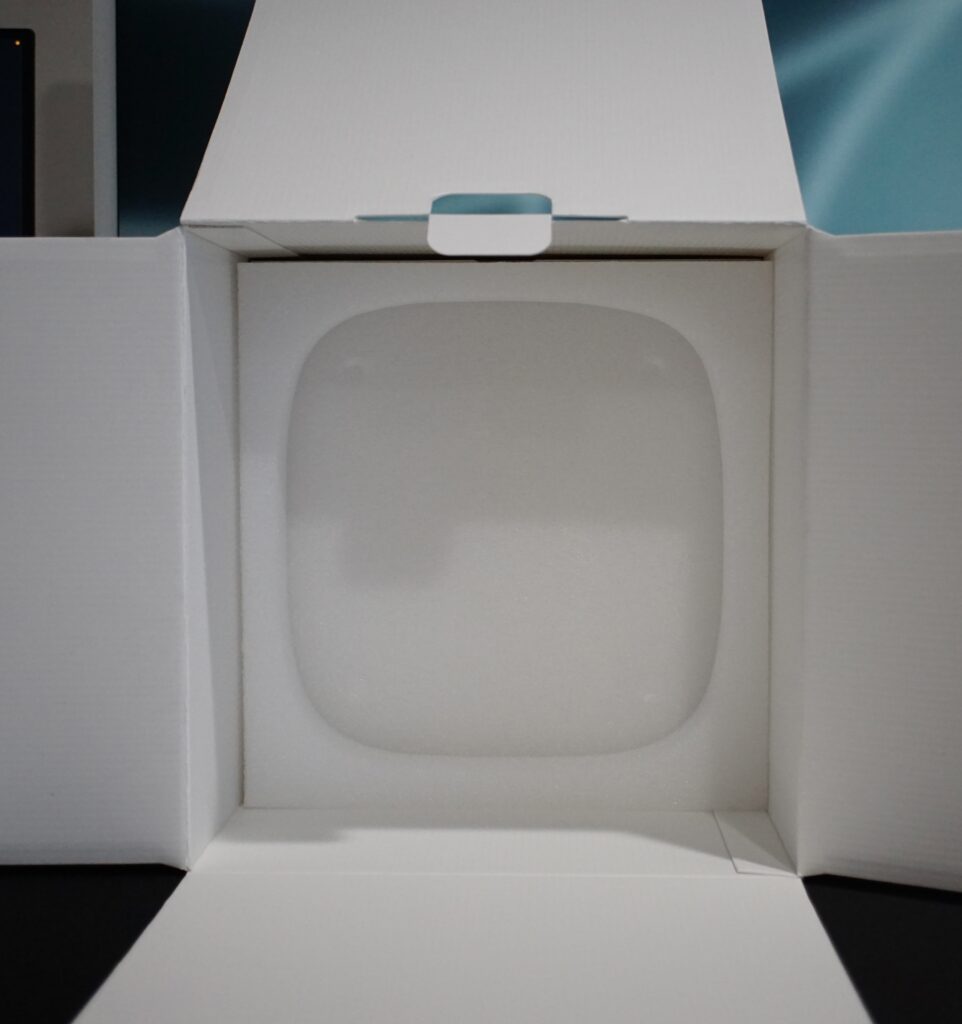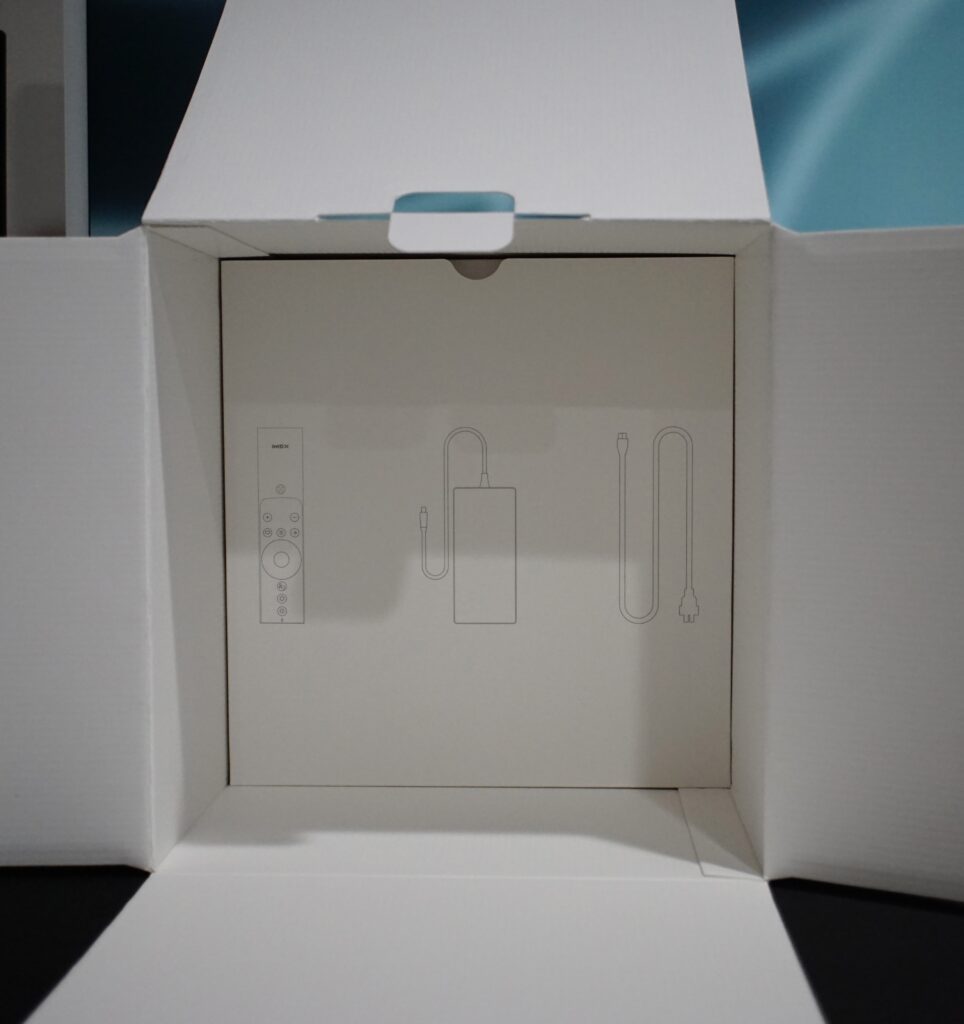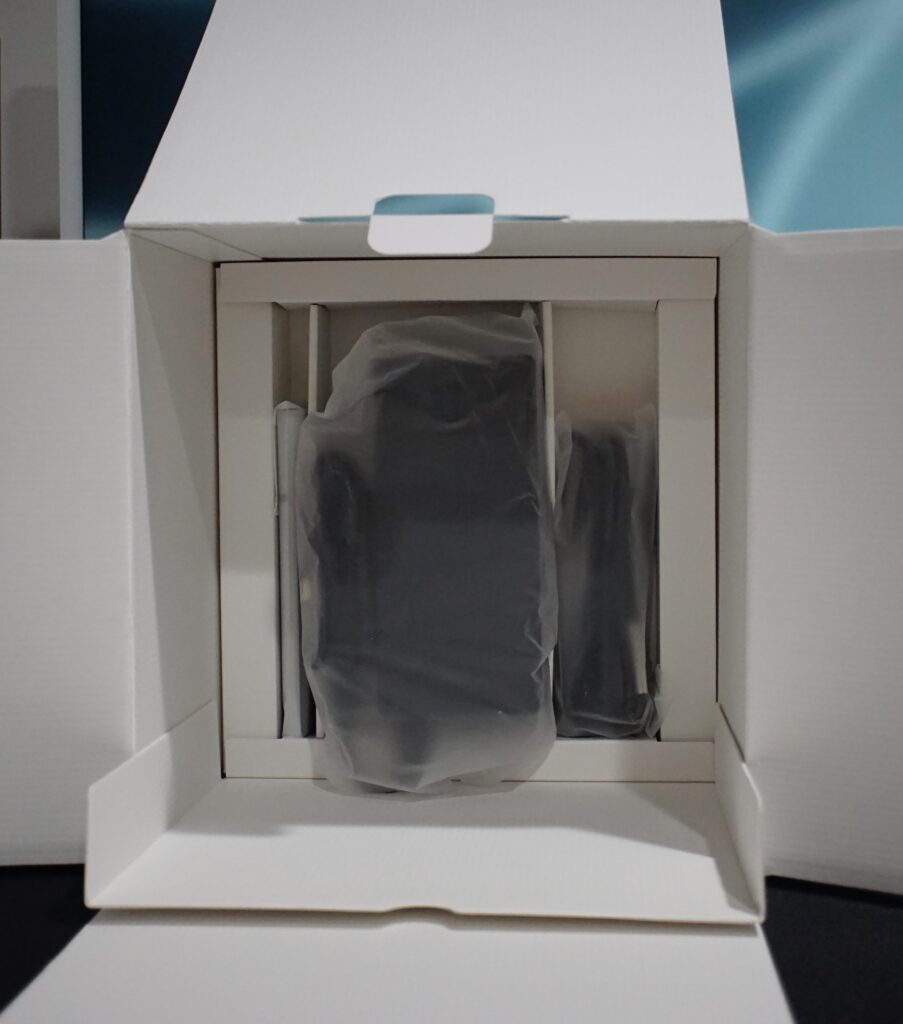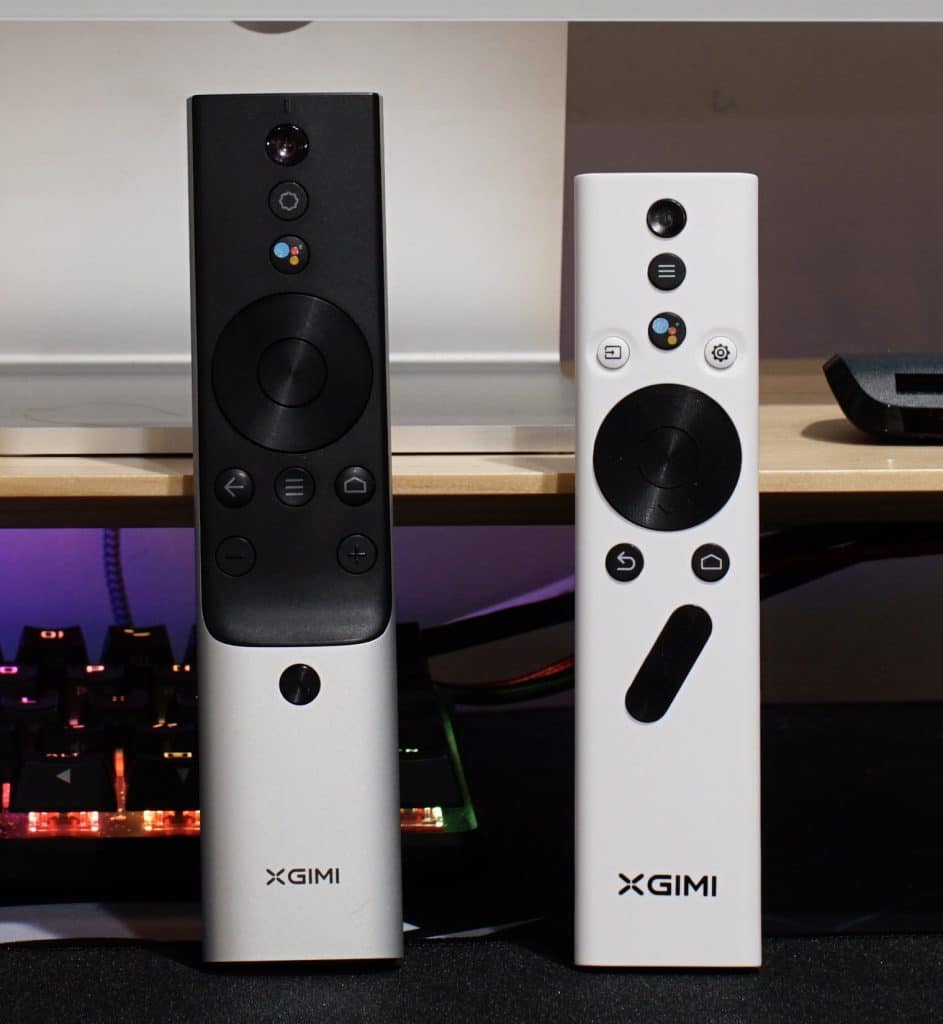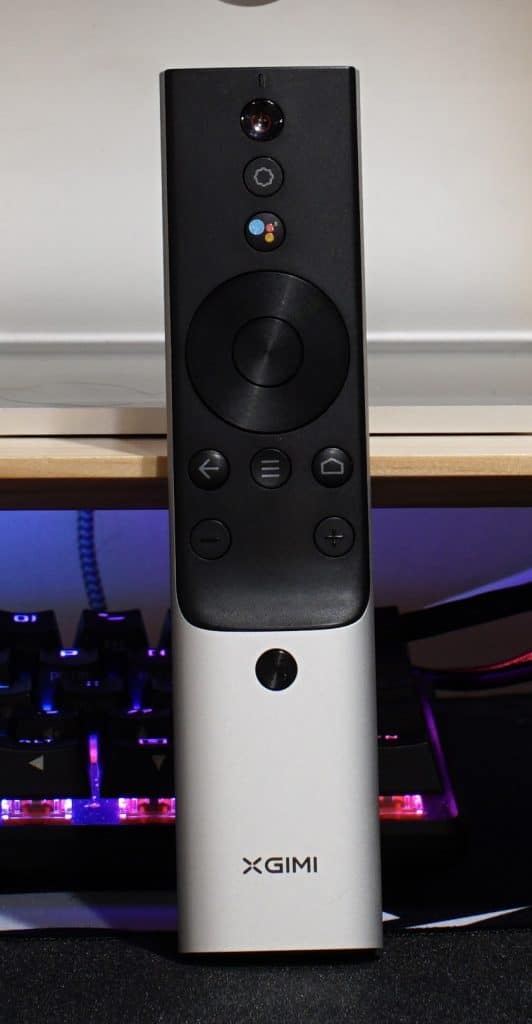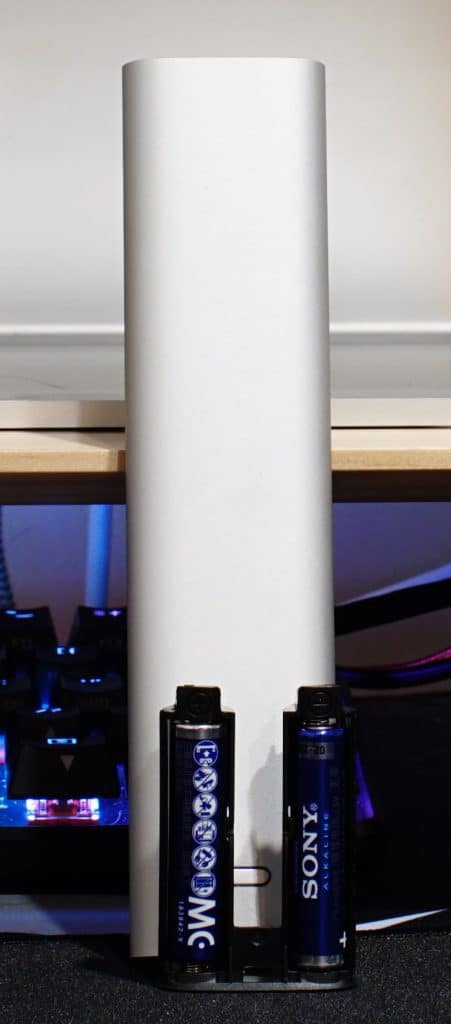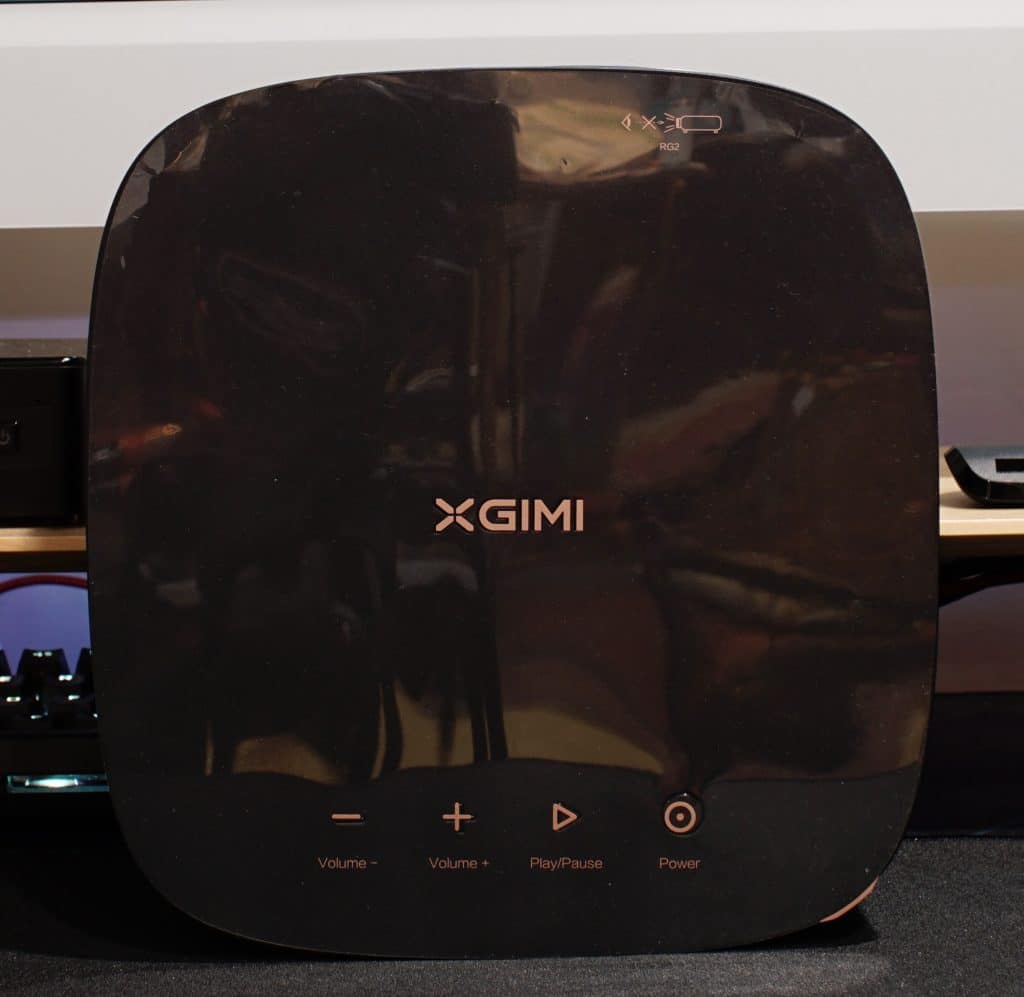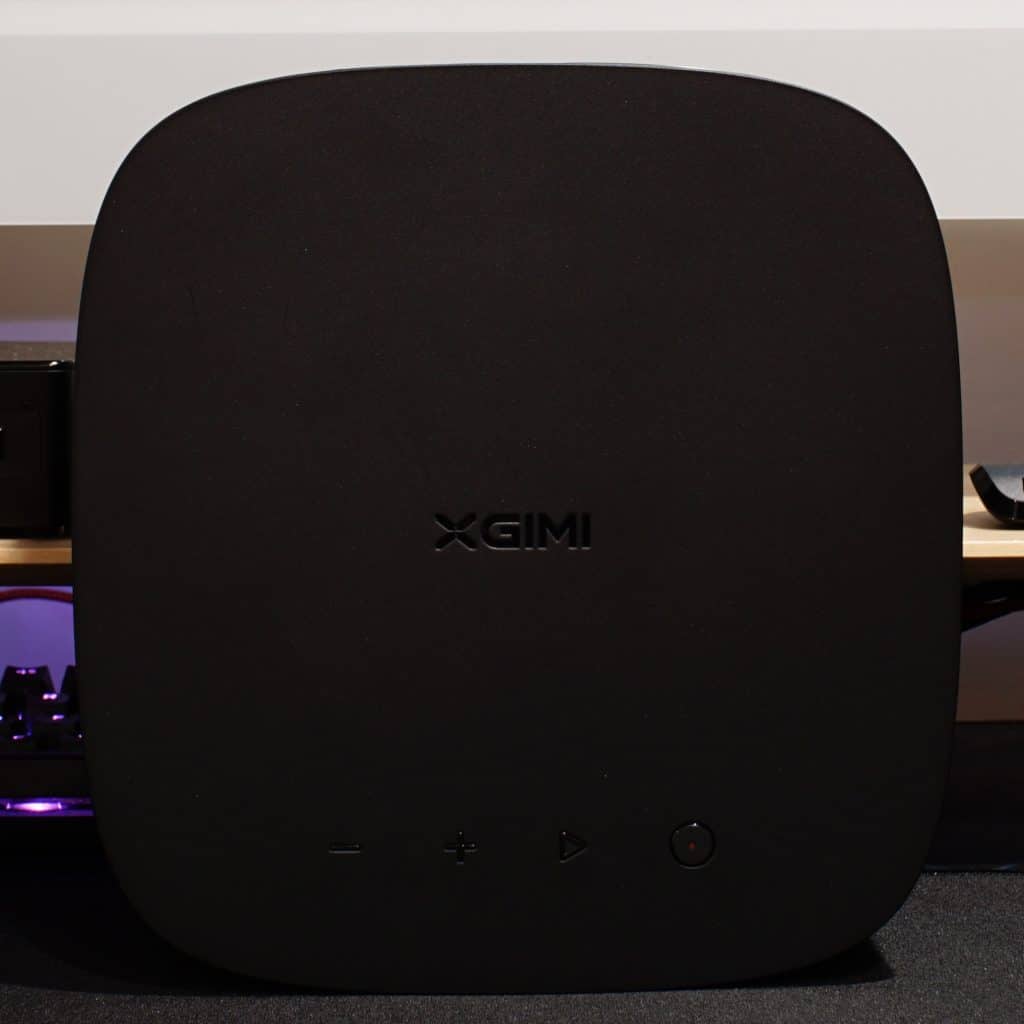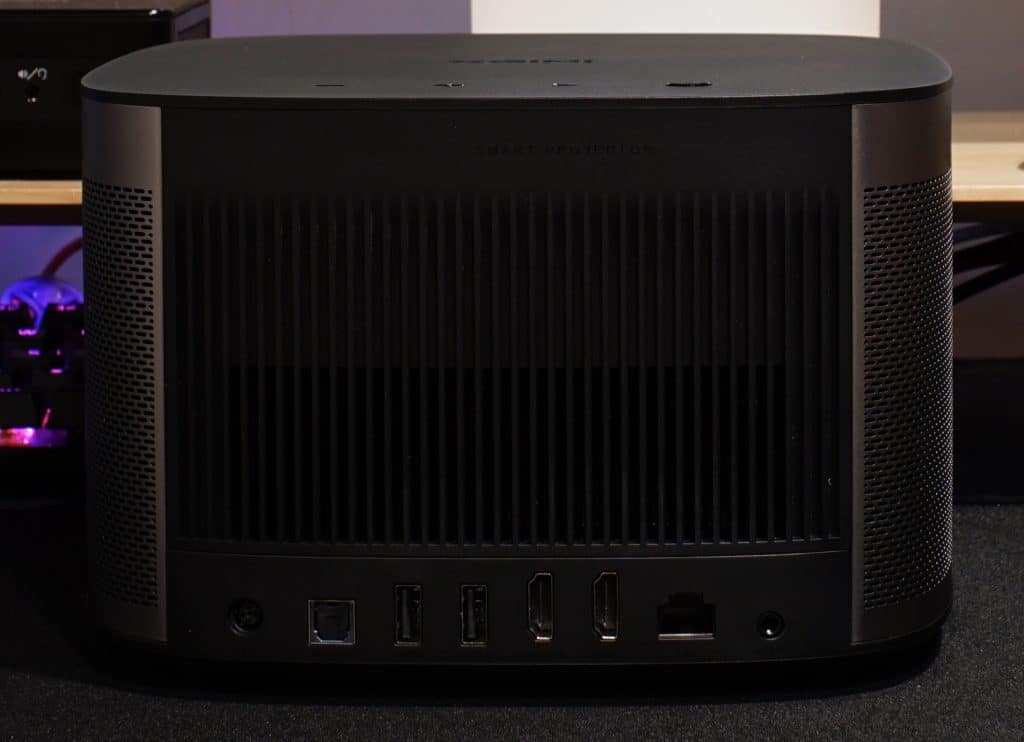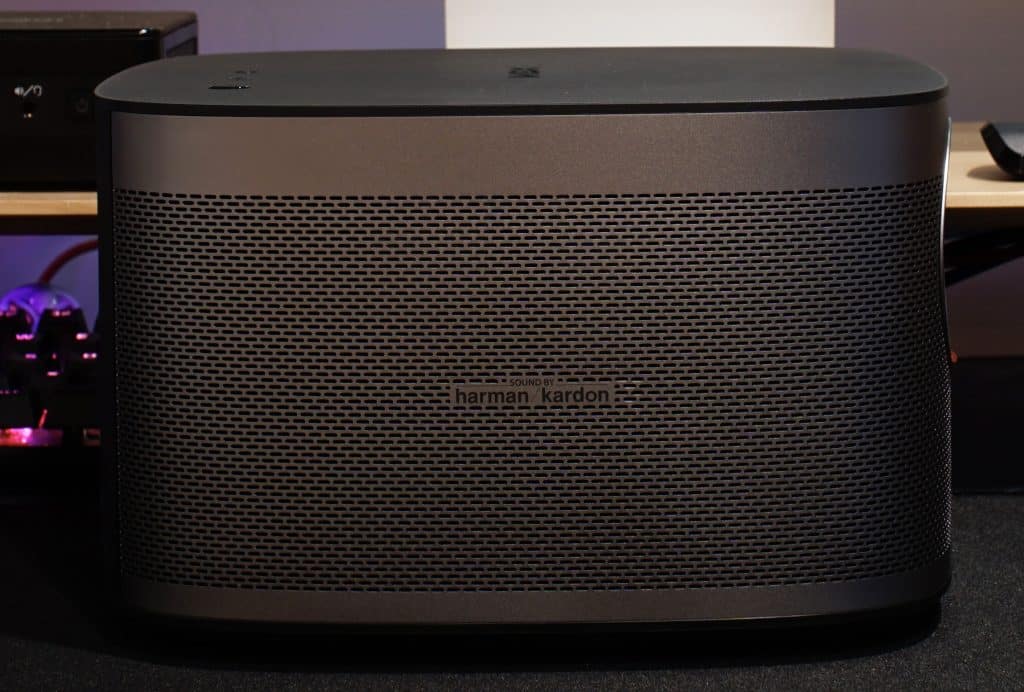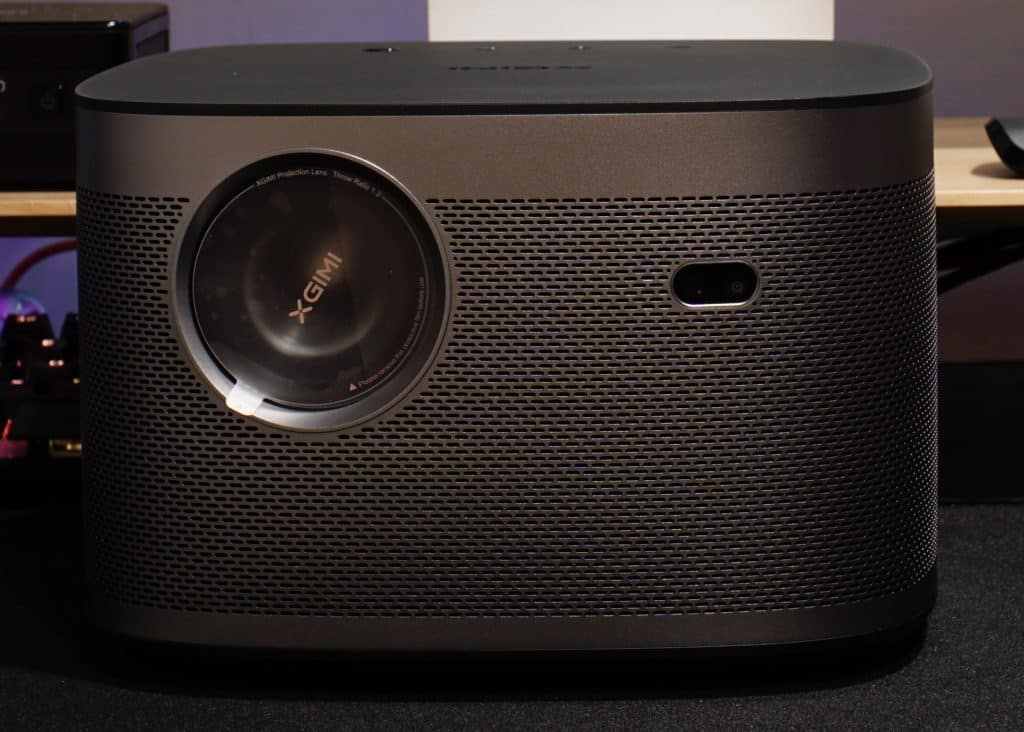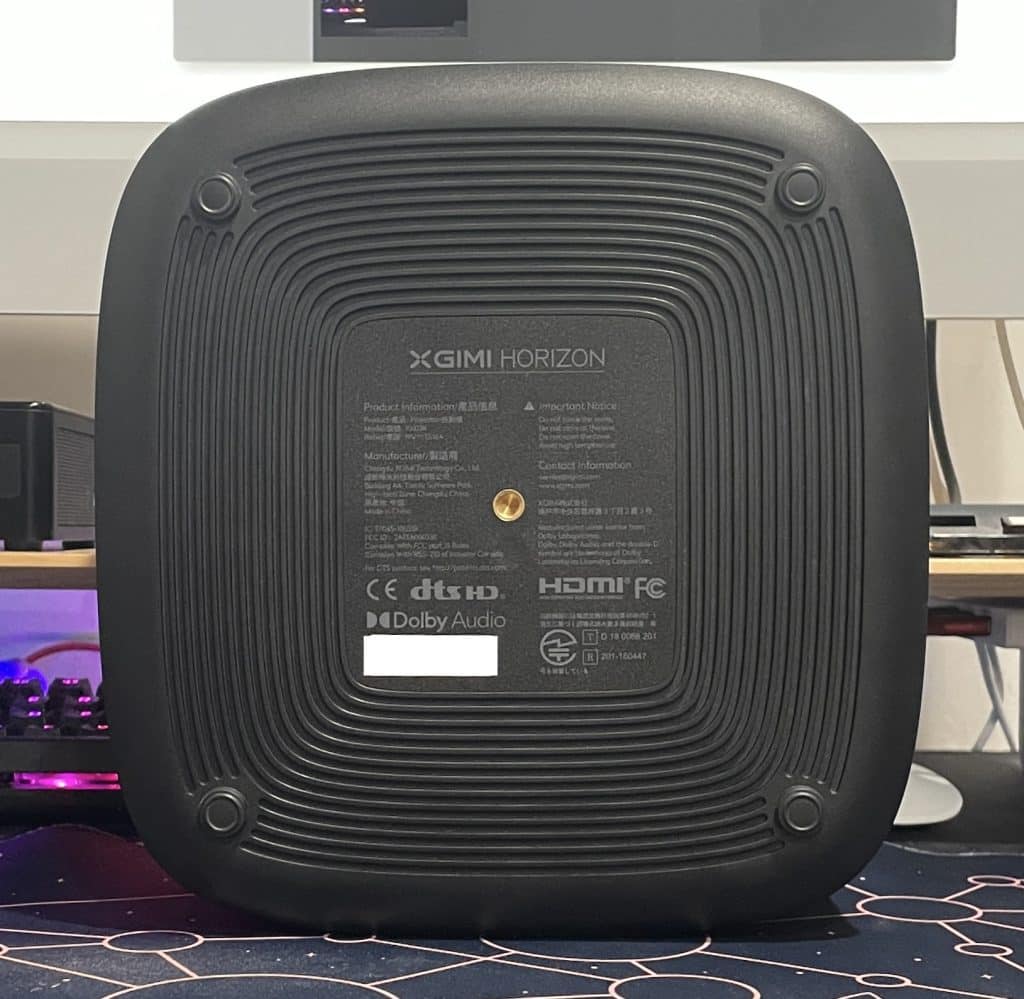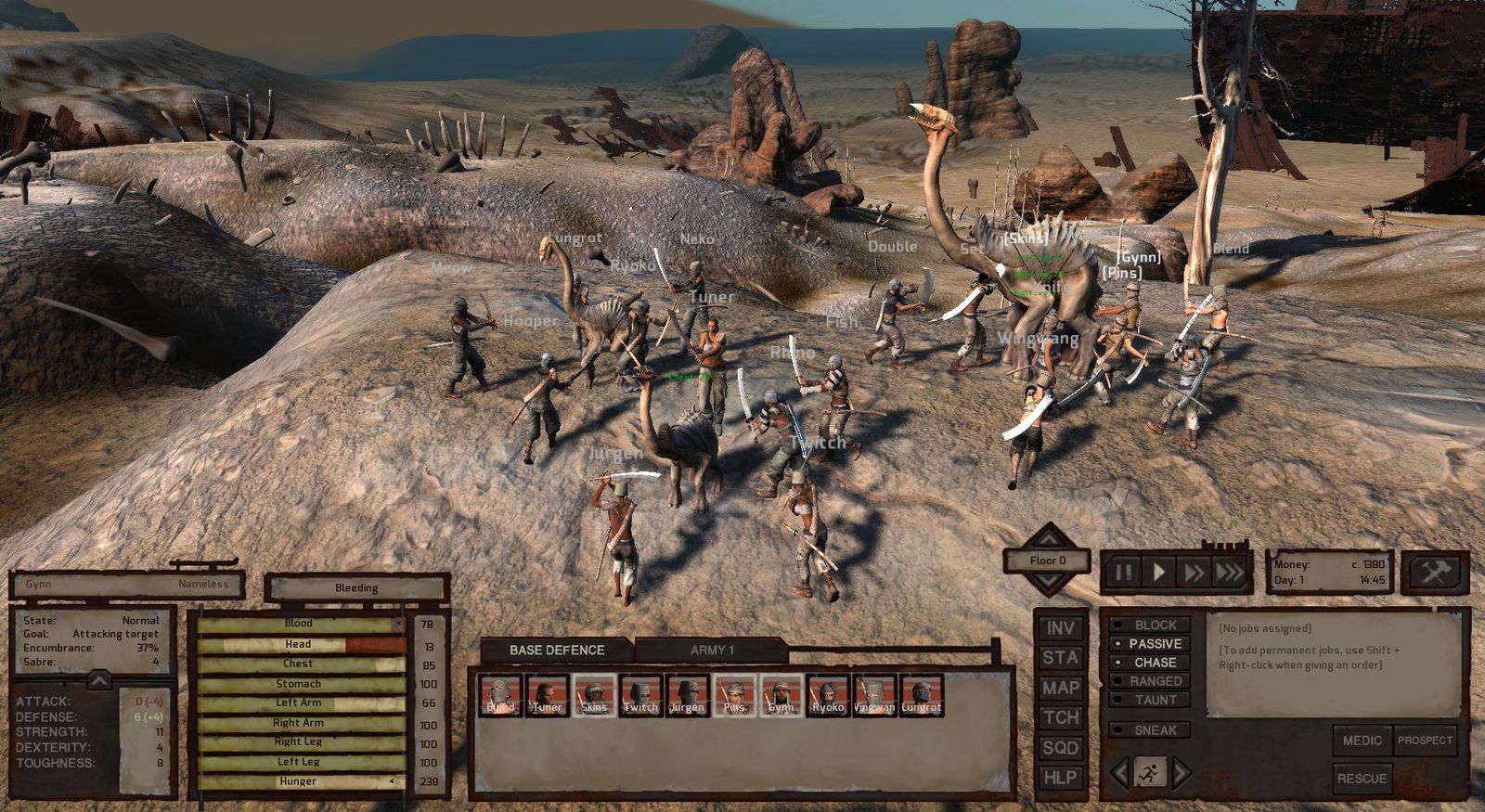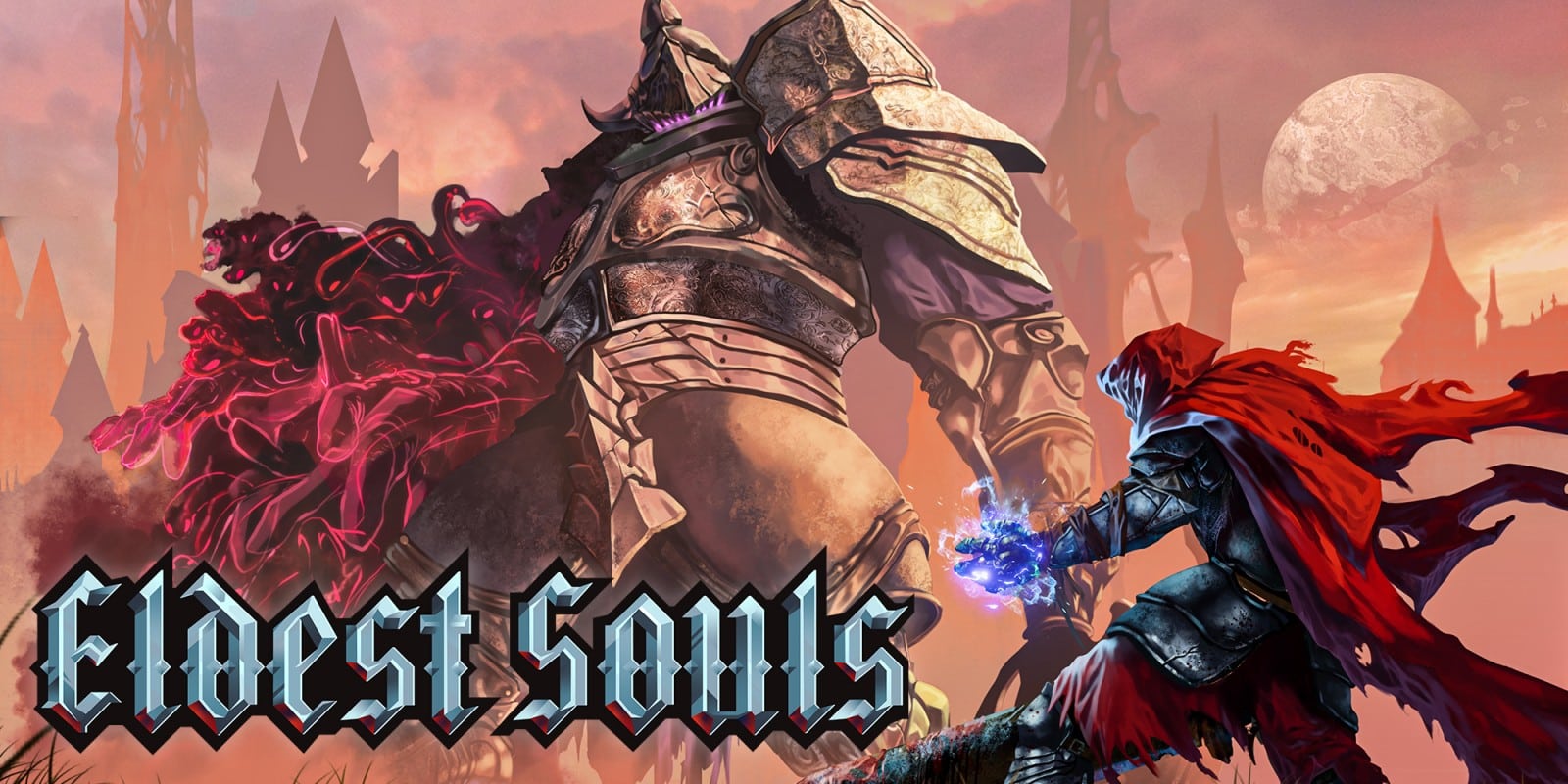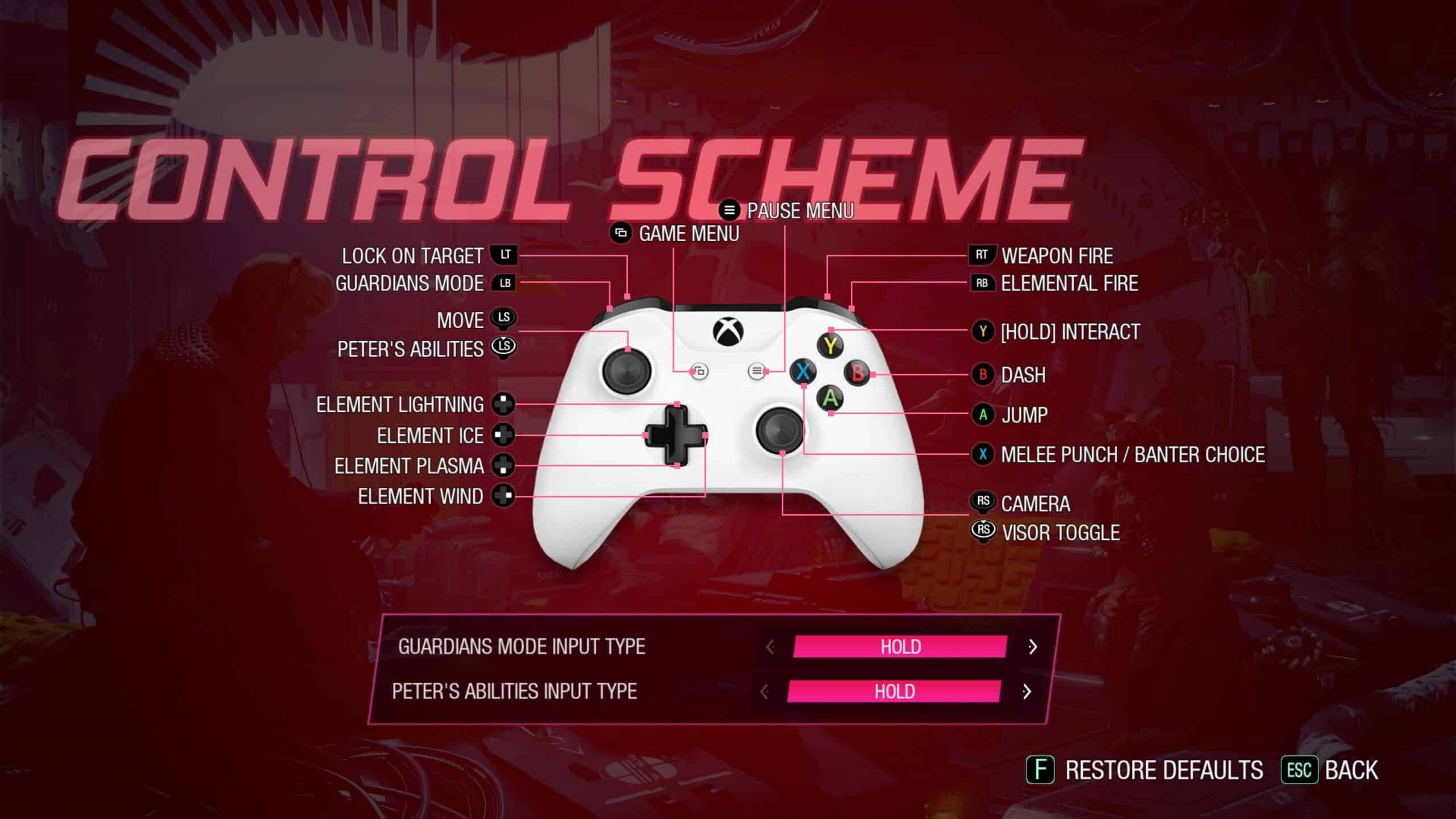Recently XGIMI announced its commitment to being the best Android projector on the market. We saw that desire when we reviewed their Horizon Pro projector a few months ago. Since then, we were lucky enough to receive their base version, Horizon, which has some distinct positive and negative features compared to the Pro model. Given the differences make for a different experience, especially for gaming, is Horizon worth your time, or is Horizon Pro the better call?
Editor’s Note: Due to Horizon and Horizon Pro sharing the same box, dimensions, weight, remote, and more, the previously mentioned content is slightly edited from our previous review.
At first glance, Horizon’s packaging has a good balance between modern and stylish. Instead of a relatively flat cardboard box with a couple of images, it’s a simplistic design with the most notable features being prominently shown. Even inside, Horizon is held firmly in place by foam inserts that protect it if anything happens. It makes a great first impression that continues when looking at the product itself.
Simple and Clean
Unlike a lot of projectors, Horizon looks sleek. Similar to XGIMI’s Halo line of products, there is a single piece of space grey colored metal that goes around the left, front and right side of Horizon. This gives it a more premium feel and is perfect to put on a shelf or to the side. On top are a couple of buttons, including power, play/pause, and volume up/down. On the back is a small vent, optical out, two USB 2.0 ports, a standard HDMI and HDMI ARC port, ethernet, and AUX. It’s a great range of options, making it very similar to a television, which is advantageous compared to other projectors that require more complex audio solutions.
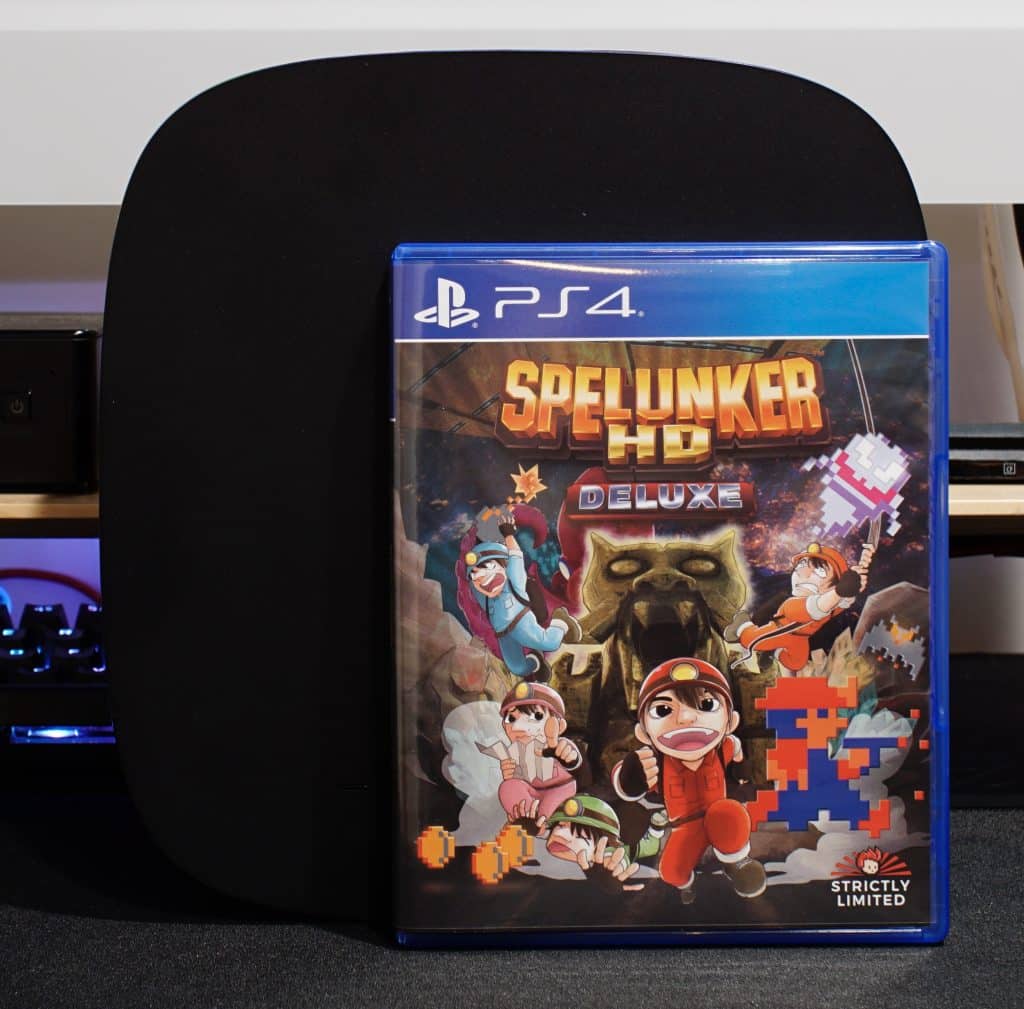
PlayStation 4 Game for Scale
Along with the nice look, it’s a pretty small projector coming in at 208.4 x 218.4 x 136.2mm. To put this into perspective, it’s only a couple of inches (about 2.7″) smaller than your average PlayStation or Xbox game. That said, the attractive size comes at an unfortunate price. Horizon uses an external power supply, which is pretty sizable at 7″ x 3.25″ x 1.5″, making it hard to mount on a ceiling. Any other configuration should be incredibly straightforward, which is good to keep in mind.
The Remote is Extremely Nice to Hold and Use
Rounding out the experience is a different remote from their Halo line of products. The far more conventional remote is mostly metal, giving it some weight and a cool feel, with a more traditional button orientation. Instead of having a focus toggle, it boasts an autofocus button, which is pretty handy. Not only does it look incredible, and I find it much easier to use, there is also has a spring-loaded battery release that is simply awesome. Once you find some batteries, you can set Horizon up immediately after opening.
Since XGIMI uses Android as a base, setup and user experience are similar to an Android television. After connecting to your network, setup can be completed through the device or via an Android phone. These steps include logging into your Google account, downloading frequently used applications, setting up Google Assistant, and Keystone Correction.
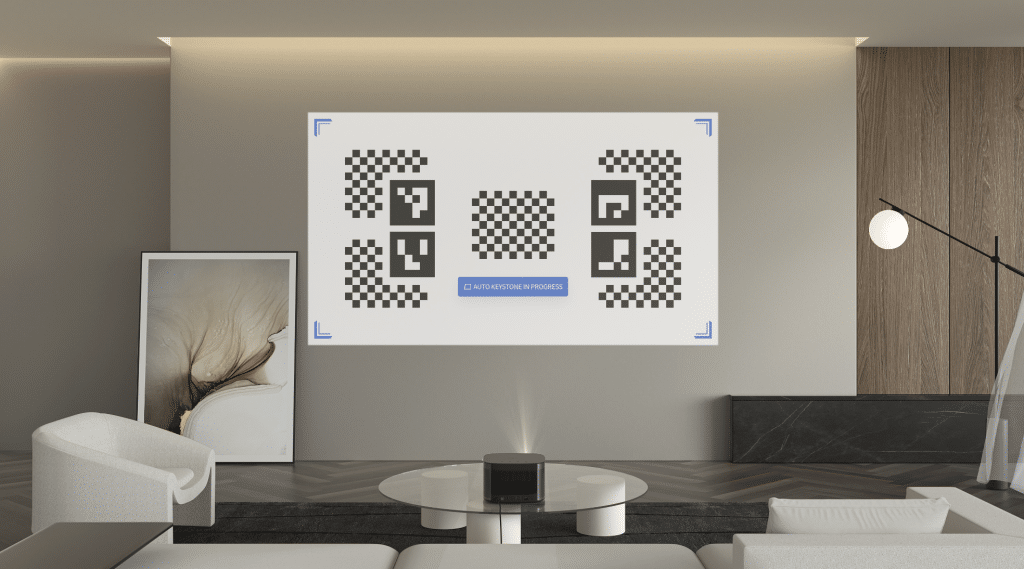
Auto Keystone Correction Adjusts to Avoid Obstacles
Auto Keystone Correction remains one of my favorite features since it actually works as advertised. Upon selecting that option, Horizon will go white, figure out where the screen is or obstacles (lamp, painting, etc.) are, and adjust the projection accordingly. After that, you can further change the dimension or accept the suggested size. The only thing I’ve noticed is Horizon struggles with some weirder materials. For example, my mom has a crafting board with a white fleece cover, and I could not get this feature to work. For more common situations, such as a traditional screen, painted wall, and even a painted paneled wall worked flawlessly.
Upon reaching the home page, those familiar with Android TV will be greeted with the standard interface, with newcomers having a slight learning curve. As of this post, Horizon is using Android 10, which features an improved Android TV interface. Everything is a lot easier to navigate; there is a place to put your favorite applications, along with dedicated quick links, suggestions, and more. Those uninterested can also disable most of these things to achieve the ideal navigating experience.
Like their other products, XGIMI benefits from Android TV’s many supported applications. Applications like Apple TV+, Disney+, Hulu, HBO Max, Peacock, Prime Video, Paramount+, YouTube TV, Sling, Plex, and countless more are available via the Google Play Store. Unfortunately, Netflix does not support Horizon. This is also true for every XGIMI product we’ve reviewed, though there are some ways to mitigate this shortcoming. These include using a device that supports it, like any modern console, a separate dedicated device, or using the built-in Chromecast to cast to Horizon.
Android performance is pretty good on Horizon. Applications perform as you’d expect, with navigation feeling rather snappy. The only time I experienced lag was following the initial boot. After a minute or two, I had no issues loading my favorite application, starting my next episode, or spending an hour rejecting a myriad of options.
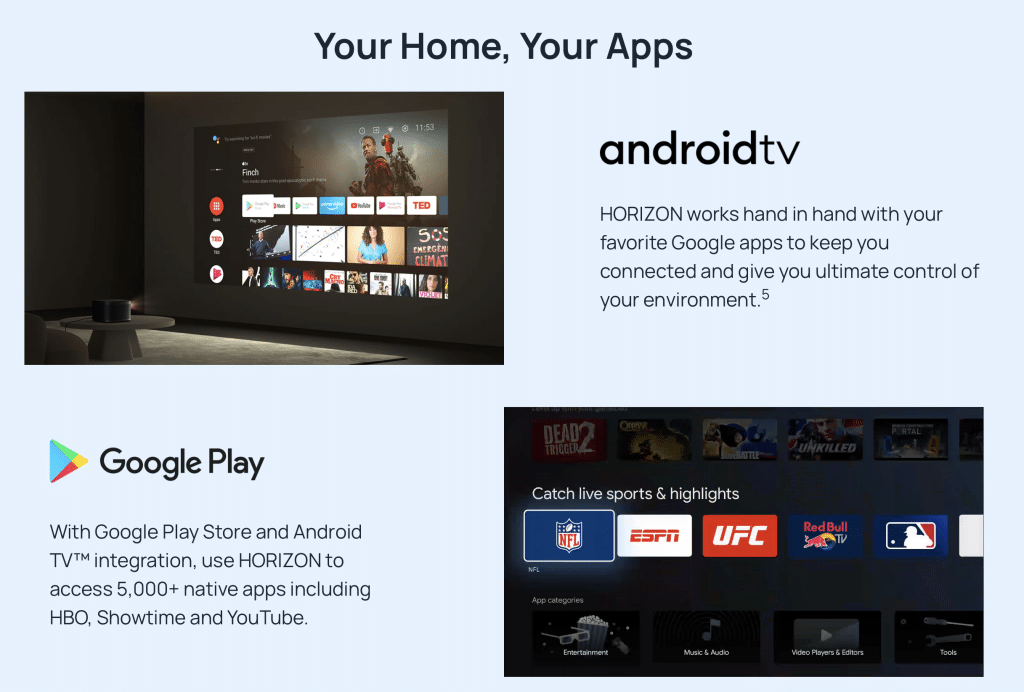
Before starting your first show/movie, we suggest changing the picture settings. Horizon comes with the usual presets like movie or game and the ability to customize the appearance. While picture quality will vary depending on the person, we found XGIMI’s MEMC frame interpolation technology gave noticeable soap opera effect and immediately turned it off. Another helpful option to note is local contrast, which helps with black levels. Since this is a brighter projector at 2200 ANSI lumens, it struggles to achieve inky blacks like dimmer projectors and nicer televisions.
The most significant difference between Horizon and Horizon Pro is resolution. While Horizon Pro supports up to 4K, Horizon is a 1080 projector. Despite this, Horizon does a great job in most situations. For this difference to actually matter, you need a 4K source. Most streamers support this for newer titles, so you can enjoy House of the Dragon or Amazon’s latest, The Peripheral, but most older shows/movies do not. Several services, such as YouTube TV, charge more for it and support very little content.
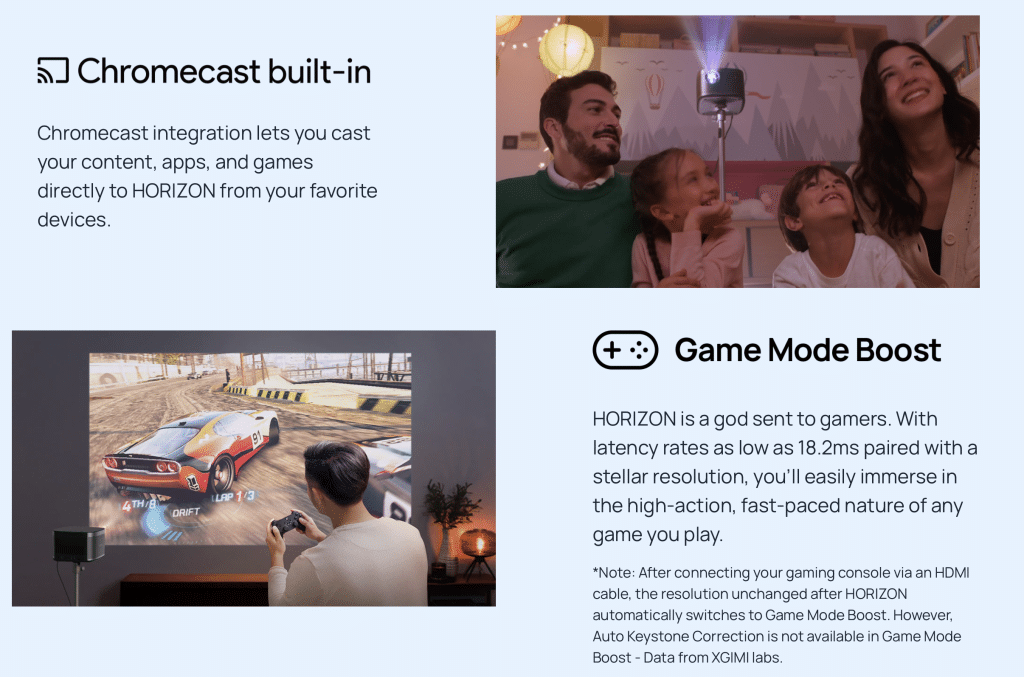
Game Mode Boost is a Must When Playing a Game
Looking at them side-by-side, there is a noticeable increase in quality with Horizon Pro when viewing 4K content. When watching anything else, I didn’t notice much of a difference. Something like American Horror Story: New York looked about the same, The Simpson‘s recent Not It episode looked identical, which held true for most broadcast shows I watched.
This leads us to the other big difference between the two projectors; Horizon has lower input lag. While Horizon Pro boasts 35ms, Horizon can achieve 18.2ms. For anyone used to a lower input display, this difference is massive.
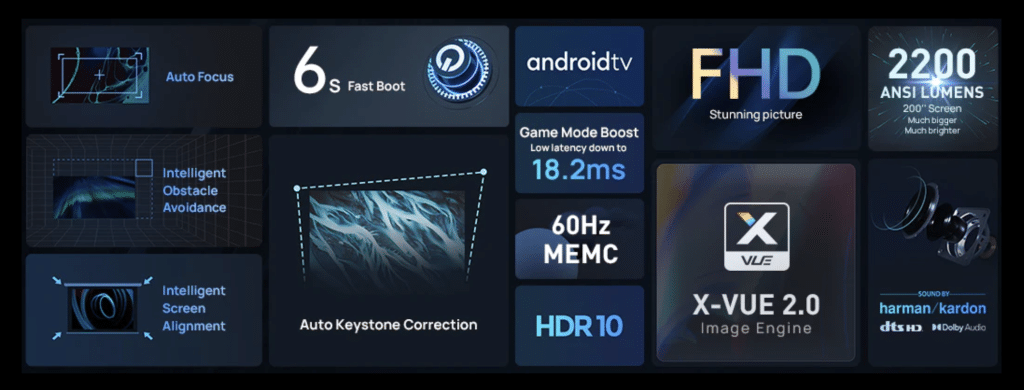
How much of a difference will vary based on the game, skill level, and source experience. For myself, the television I use for most games has about 30ms. Naturally, when moving to Horizon Pro, the core experience felt relatively the same. With Horizon, things feel noticeably more natural. It’s a little easier to hit my shots in Destiny 2, ruin a raider’s day on Dragon Ball: The Breakers, or stay alive in Elden Ring. Where I noticed it the most were more technical games like Metal: Hellsinger or Them’s Fightin’ Herds, where I saw an increase in performance. It wasn’t much, but enough to make a difference when it mattered.
Finally, I wanted to touch briefly on sound. While I strongly suggest a dedicated audio solution, Horizon boasts the same 2x8w Harman Kardon speakers found in Horizon Pro. The speakers sound similar to what you’d get on a comparably priced television. There is enough power to fill a room or outdoor party; you just lose out on clarity and details. That said if you’re happy with how the average television sounds, you’ll almost certainly be pleased with Horizon’s performance, even if you have a weird arrangement/placement.
XGIMI Horizon Review Verdict

XGIMI did a fantastic job with the Horizon line. Both products have different demographics in mind and quickly become a question of use case. When it comes to gaming, Horizon is in a pretty good spot. With roughly half the input lag of Horizon Pro, along with many newer games failing to hit 60 FPS at 4K, it’s a solid choice for anyone looking to upgrade their gaming setup. That said, if you’re an avid show/movie watcher, you’ll probably benefit more from the enhanced picture offered by Horizon Pro.
[Editor’s Note: XGIMI Horizon was given to us for review purposes and was reviewed on a generic/low-end white screen.]

